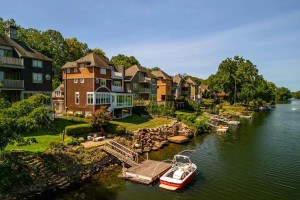North Broad Street Takes Stock of Itself

There’s plenty of potential on North Broad Street, according to North Broad Renaissance’s “State of North Broad 2016” report. | Photo by Flickr user ChristineFisher, licensed under CC-BY-SA-2.0
How is North Broad Street faring right now?
Not as badly as many think. The numbers contained in the “State of North Broad 2016” report, released last week by North Broad Renaissance (NBR), paint a picture of a corridor that, while still challenged, contains plenty of potential for growth and revitalization.
From City Hall to Germantown and Erie avenues, the North Broad corridor and its adjacent Census tracts are a sleeping giant, based on figures in the report: 48,384 residents, with population projected to rise by 4.8 percent by 2021; 24,903 jobs, 1,471 businesses and 19,465 housing units in the corridor; $1.7 billion in assessed real estate value. All of this in some of the most walkable, transit-friendly territory in the city, with an average Walk Score of 91 and where 58.6 percent of all residents walk, bike or take transit from home to work and back.
Housing in the area also remains very affordable: the median home value in 2016 is $88,733, and the median monthly rent for an apartment in 2014 was $590.
That’s the giant part. Here’s the part that’s asleep: The vacancy rate for housing in the corridor is 14.3 percent, well above the citywide figure. Nearly half the area’s residents are between the ages of 18 and 34, but the educational attainment level of North Broad Census tract residents is below both that of the corridor itself and the citywide level, with 17 percent of Census tract residents having a bachelor’s degree or higher. The per capita income of $14,966 is also below that of city residents as a whole.
So, however, are the violent crime statistics for the corridor. Only five percent of all crimes committed along the North Broad corridor in 2015 were violent crimes, compared with nine percent citywide. The overall personal crime rate for the area is in line with the citywide average, while property crime runs above that average. Nonetheless, NBR is aware of the role safety plays in shaping outside perceptions of the community and has as one of its projects encouraging more local businesses and residents to enroll their security cameras in the Philadelphia Police Department’s SafeCam program, whereby they become additions to the “eyes on the street” already deployed by the cops and local residents.
Even with the challenges, developers have been waking up to North Broad’s potential. As of this year, five new developments have been completed, all of them between Spring Garden Street and Fairmount Avenue, with Tower Investments’ conversion of the former Philadelphia State Office Building to apartments and Eric Blumenfeld’s restoration of the Divine Lorraine Hotel bracketing this stretch. Another four are currently under construction between Vine Street and Girard Avenue, and nine more have been proposed, including a major residential conversion near the Freedom Theater, a restoration of the landmark Beury Building at the Broad-Erie-Germantown intersection as senior housing, and the renovation of the historic Uptown Theater.
Cleaning the street and improving its streetscape are among the low-hanging fruit NBR plans to pluck as part of its “2020 Vision” action plan. A cleaning company hired by NBR began cleaning and maintaining sidewalks and public space along the street in October, and the group plans to launch an intensive anti-litter campaign aimed at bringing the street’s City Litter Index score below the citywide average of 1.7 (where 1 is “minimal litter” and 4 is “severely littered”). Currently, that score stands at 1.9 overall, with areas north of Girard Avenue scoring 2.3.
As for the 42 light masts that were the chief legacy of the era when Avenue of the Arts, Inc., took responsibility for both North and South Broad Street, NBR has dubbed them the “North Poles” and is trying to figure out how to turn them into assets that truly benefit the community.
“[W]ith the completion our 2020 Vision – the community-driven strategic plan for the NBR – we are on the road to re-establish North Broad Street as the huge economic driver it can become, and revitalize communities, culture and commerce,” NBR Executive Director Shalimar Thomas wrote in the report’s introduction. “We have developed a plan, and now we are eager to begin the work alongside our partners and supporters who will help us reach our shared goals for the community.”
NBR was formed this year as a special services district to give North Philadelphia’s Main Street the level of attention and service Avenue of the Arts, Inc., could not. It defines its main purpose as serving as a connector, enabling city officials, neighborhood and community groups and current and potential developers to leverage area assets and improve the overall quality of life and economic fortunes of the North Broad corridor. The entire “State of North Broad” report is available for download from NBR’s home page.
Follow Sandy Smith on Twitter.

